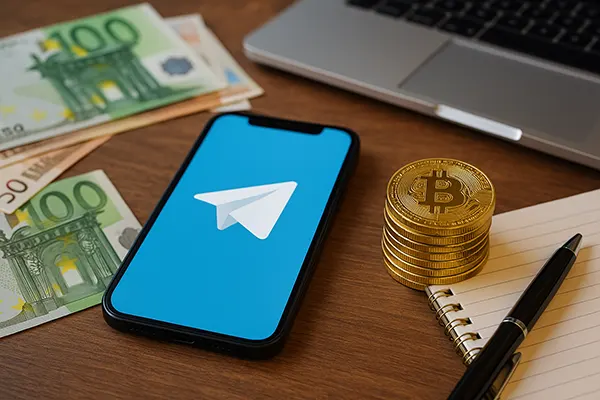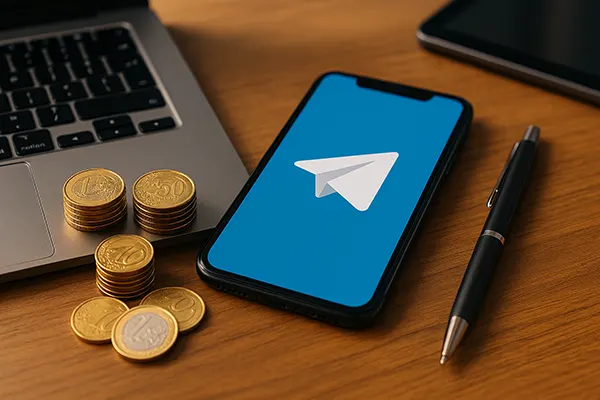
Earning on Telegram: How to Launch a Micro-Channel and Monetise It with Affiliate Marketing and Ads
Telegram has become much more than a secure messaging app — it’s a full-fledged ecosystem where content creators can build a loyal audience and earn real income. In 2025, launching a micro-channel on Telegram is one of the most accessible ways to start monetising your ideas without significant investment. With a well-targeted topic and clear strategy, even small channels can generate consistent profits through affiliate marketing and native ads.
Choosing the Right Niche for Your Telegram Micro-Channel
When launching a micro-channel, your niche defines your growth potential and monetisation methods. It’s crucial to pick a theme that is both interesting to you and in demand among Telegram users. Micro-channels typically revolve around compact, value-driven content — for instance, daily finance tips, discounted deals, or exclusive insights in a niche area.
Popular and profitable niches in 2025 include crypto news, online education, personal finance, sports betting, and tech product deals. These topics have high engagement rates and plenty of monetisation options. However, uniqueness is key — instead of covering everything, aim for a narrow focus, like “Budget travel in Europe” or “Danish online casino promos.”
Before choosing a topic, research your potential audience and competitors. Use Telegram’s internal search, channels directories like tlgrm.eu or telemetr.io, and keyword trends. This will help validate demand and define your channel’s unique value proposition — what makes your channel worth subscribing to over others?
Setting Up and Structuring Your Channel
Once you’ve decided on a niche, it’s time to create the channel. Go for a clear, descriptive name and write a compelling bio. Use a high-quality profile image and pin a welcome post to set expectations. Consider enabling public access for discoverability, but if exclusivity is part of your value, private channels with invite-only access also work well.
Your posting style should match your audience’s habits. For instance, short, actionable tips perform well in finance and productivity channels. Use emojis and formatting sparingly to increase readability. Don’t forget to include relevant hashtags — they help with content discovery across Telegram’s growing search system.
Most successful micro-channels post 1–3 times daily. Consistency is more important than frequency. Using Telegram bots like ControllerBot or Combot can automate scheduling and collect analytics to understand what content works best.
How to Monetise via Affiliate Marketing
Affiliate marketing is one of the most effective ways to monetise a Telegram channel with a small but engaged audience. In simple terms, you promote a product or service and earn a commission when your subscribers take an action — usually a purchase, registration, or click.
Telegram allows short-form and native promotion, so avoid obvious ad formats. Instead, blend affiliate links into helpful posts, such as “Top 5 VPNs for remote work” or “Best deposit bonuses at Danish casinos today.” These formats provide value while encouraging conversions naturally.
Popular affiliate platforms for Telegram in 2025 include Admitad, Partners.House, Gambling.pro, and CityAds. They offer wide selections of CPA and CPS programmes in niches like gaming, finance, eCommerce, and education. Choose offers that match your channel’s content and test them regularly to optimise performance.
Best Practices for Affiliate Promotions
Use your affiliate links ethically and transparently. Telegram doesn’t require you to disclose ads formally, but building trust with your audience means always being honest. Phrases like “We may earn a commission if you sign up” are appreciated by users and enhance long-term credibility.
Track every campaign. Use UTM parameters and shorteners (like Bit.ly or T.Me short links) to see what posts drive traffic. Monitor conversions via your affiliate dashboard and use this data to refine content strategy.
It’s also helpful to occasionally run polls or ask subscribers what kind of offers they’re interested in. This makes monetisation feel collaborative rather than intrusive and can boost engagement and ROI.

Alternative Revenue: Sponsored Ads and Paid Posts
In addition to affiliate marketing, micro-channels can generate income through direct ad placements. Once your channel surpasses 500–1000 active subscribers, you can start attracting advertisers — especially if your engagement rate is high (5–10% or more).
Telegram doesn’t have a built-in ad marketplace for small channels, so outreach and networking are essential. Register your channel on platforms like Telega.io, Epicstars, or Plibber to be visible to potential advertisers. You can also create a “Media Kit” with your channel stats and pricing for pinned posts, stories, or native content.
Sponsored content should always align with your channel’s niche and tone. Avoid spammy or off-topic promotions — even one poor-quality ad can lead to a drop in trust and unsubscribes. Value over volume should be your rule.
Maintaining Audience Loyalty While Monetising
The key to sustainable monetisation is putting your audience first. Focus on creating value and informative posts — monetisation should always feel like a natural extension, not a disruption. If your audience trusts you, conversions follow naturally.
Run occasional giveaways, exclusive subscriber-only content, or ask for feedback to build loyalty. Responding to comments and messages also helps create a sense of community, even in a micro-channel format.
Finally, keep evolving. Monitor analytics, test new content formats, and stay updated on Telegram’s features. As the platform grows in 2025, new tools like native ad integration or premium subscriptions could unlock even more monetisation potential.
